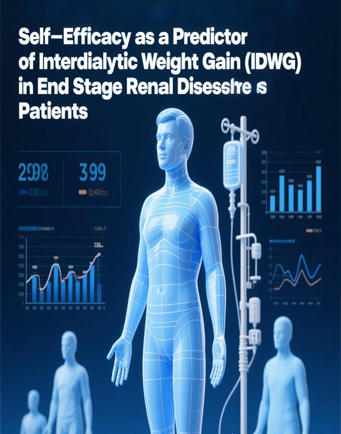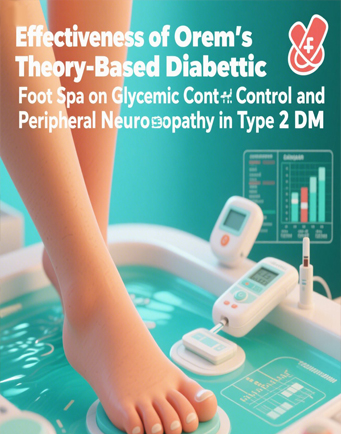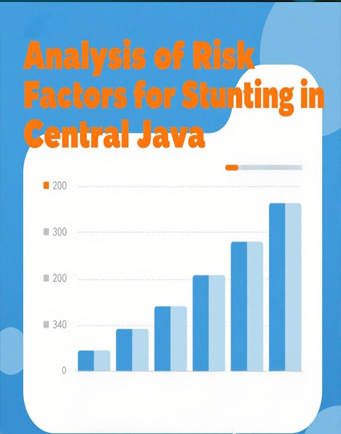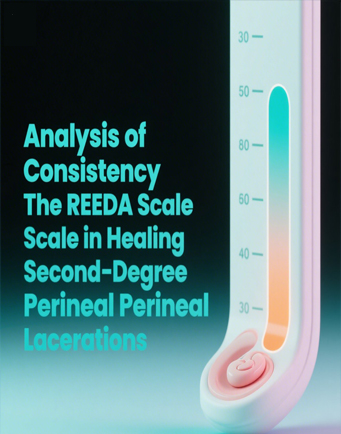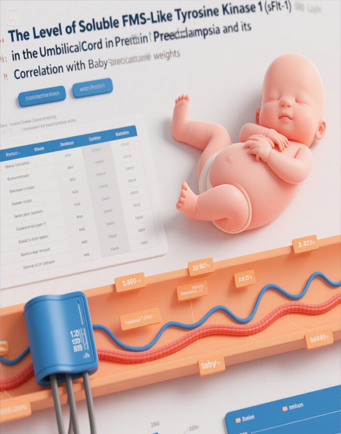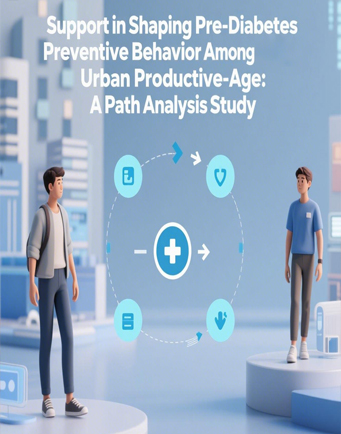Socio-demographic Characteristics of Delivery by Caesarean Section of the Vietnamese Population: A Cross-sectional study
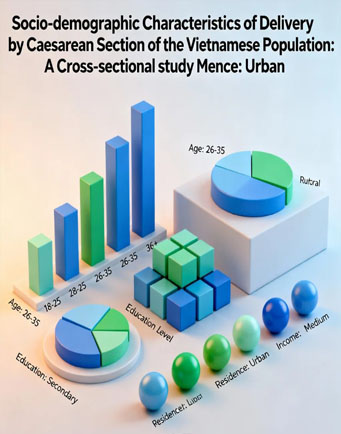
Downloads
The rising trend of caesarean deliveries in Vietnam, influenced by various social and demographic factors, has raised public health policy concerns as many procedures are performed without clear medical indications. This study seeks to explore the relationship between socio-demographic factors and the likelihood of caesarean section deliveries within the Vietnamese population. This study employed a cross-sectional design using data from the Vietnam Multiple Indicator Cluster Survey (MICS) 2020–2021, which utilized a two-stage stratified cluster sampling method to ensure national representativeness. The analysis focused on 1,049 women aged 15–49 who had at least one child. Data were collected through standardized questionnaires and analyzed using chi-square tests and binary logistic regression to examine associations between socio-demographic factors and caesarean section deliveries. Based on data from 1,343 Vietnamese women, this study found that 32.84% of deliveries were by caesarean section (CS). Bivariate analysis showed significant associations between CS and factors such as maternal age, education, residence, wealth, and place of delivery. However, multivariate logistic regression revealed that only maternal age, household wealth, and place of delivery remained significant predictors. Older women and those from wealthier households had higher odds of CS, while births at commune health centers were less likely to involve CS. Education level and rural residence were not independently associated with CS after adjustment.
Ahinkorah, B. O., Seidu, A.-A., Armah-Ansah, E. K., Ameyaw, E. K., Budu, E., & Yaya, S. (2021). Socio-economic and demographic factors associated with fertility preferences among women of reproductive age in Ghana: evidence from the 2014 Demographic and Health Survey. Reproductive Health, 18(2),1-10. https://doi.org/10.1186/s12978-020-01057-9
Amoah, P. A., & Phillips, D. R. (2020). Socio-demographic and behavioral correlates of health literacy: a gender perspective in Ghana. Women & Health, 60(2), 123–139. https://doi.org/10.1080/03630242.2019.1613471
Bam, V., Lomotey, A. Y., Kusi-Amponsah Diji, A., Budu, H. I., Bamfo-Ennin, D., & Mireku, G. (2021). Factors influencing decision-making to accept elective caesarean section: A descriptive cross-sectional study. Heliyon, 7(8), e07755. https://doi.org/10.1016/j.heliyon.2021.e07755
Betran, A. P., Ye, J., Moller, A.-B., Souza, J. P., & Zhang, J. (2021). Trends and projections of caesarean section rates: global and regional estimates. BMJ Global Health, 6(6), e005671. https://doi.org/10.1136/bmjgh-2021-005671
Claramonte Nieto, M., Meler Barrabes, E., Garcia Martínez, S., Gutiérrez Prat, M., & Serra Zantop, B. (2019). Impact of aging on obstetric outcomes: defining advanced maternal age in Barcelona. BMC Pregnancy and Childbirth, 19(1), 342. https://doi.org/10.1186/s12884-019-2415-3
Colomar, M., Opiyo, N., Kingdon, C., Long, Q., Nion, S., Bohren, M. A., & Betran, A. P. (2021). Do women prefer caesarean sections? A qualitative evidence synthesis of their views and experiences. PLOS ONE, 16(5), e0251072. https://doi.org/10.1371/journal.pone.0251072
Correa-de-Araujo, R., & Yoon, S. S. (Sarah). (2021). Clinical Outcomes in High-Risk Pregnancies Due to Advanced Maternal Age. Journal of Women’s Health, 30(2), 160–167. https://doi.org/10.1089/jwh.2020.8860
de Loenzien, M., Mac, Q. N. H., & Dumont, A. (2021). Women’s empowerment and elective cesarean section for a single pregnancy: a population-based and multivariate study in Vietnam. BMC Pregnancy and Childbirth, 21(3),1-12. https://doi.org/10.1186/s12884-020-03482-x
de Loenzien, M., Schantz, C., Luu, B. N., & Dumont, A. (2019). Magnitude and correlates of caesarean section in urban and rural areas: A multivariate study in Vietnam. PLOS ONE, 14(7), e0213129. https://doi.org/10.1371/journal.pone.0213129
Etcheverry, C., Betrán, A. P., de Loenzien, M., Kaboré, C., Lumbiganon, P., Carroli, G., Mac, Q. N. H., Gialdini, C., & Dumont, A. (2024). Women’s caesarean section preferences: A multicountry cross-sectional survey in low- and middle-income countries. Midwifery, 132, 103979. https://doi.org/10.1016/j.midw.2024.103979
Giang, H. T. N., Duy, D. T. T., Hieu, L. T. M., Vuong, N. L., Ngoc, N. T. T., Phuong, M. T., & Huy, N. T. (2022). Factors associated with the very high caesarean section rate in urban areas of Vietnam. PLOS ONE, 17(8), e0273847. https://doi.org/10.1371/journal.pone.0273847
Heo, J., Kim, S. Y., Yi, J., Yu, S. Y., Jung, D. E., Lee, S., ... & Oh, J. (2020). Maternal, neonatal, and child health systems under rapid urbanization: a qualitative study in a suburban district in Vietnam. BMC health services research, 20(90),1-10. https://doi.org/10.1186/s12913-019-4874-7
Islam, Md. A., Sathi, N. J., Hossain, Md. T., Jabbar, A., Renzaho, A. M. N., & Islam, S. M. S. (2022). Caesarean delivery and its association with educational attainment, wealth index, and place of residence in Sub-Saharan Africa: a meta-analysis. Scientific Reports, 12, 5554. https://doi.org/10.1038/s41598-022-09567-1
Joyce III, T. J., Miyamoto, Y., Campbell, C., Savastano, D., Ta, K., & Kerr, A. D. (2025). An Editorial on an Institutional Maternal Request Cesarean Section Rate. Cureus, 17(4), e82985. https://doi.org/10.7759/cureus.82985
Manyeh, A. K., Amu, A., Akpakli, D. E., Williams, J., & Gyapong, M. (2018). Socioeconomic and demographic factors associated with caesarean section delivery in Southern Ghana: evidence from INDEPTH Network member site. BMC Pregnancy and Childbirth, 18(1), 405. https://doi.org/10.1186/s12884-018-2039-z
Maricic, M., Stojanovic, G., Pazun, V., Stepović, M., Djordjevic, O., Macuzic, I. Z., ... & Radovanovic, S. (2021). Relationship between socio-demographic characteristics, reproductive health behaviors, and health literacy of women in Serbia. Frontiers in Public Health, 9, 629051. https://doi.org/10.3389/fpubh.2021.629051
McBride, B., Kane, S., O’Neil, J., & Nguyen, L. T. (2024). The best healthcare (commodity) available (for purchase): provider-induced demand for obstetric ultrasonography among ethnic minority women in rural northern Vietnam. AJOG Global Reports, 4(3), 100375. https://doi.org/10.1016/j.xagr.2024.100375
McKinn, S., Linh, D. T., Foster, K., & McCaffery, K. (2019). A qualitative analysis of factors that influence Vietnamese ethnic minority women to seek maternal health care. BMC Pregnancy and Childbirth, 19(1), 243. https://doi.org/10.1186/s12884-019-2375-7
Nguyen, L. D., Nguyen, L. H., Ninh, L. T., Nguyen, H. T. T., Nguyen, A. D., Vu, L. G., ... & Ho, R. C. (2021). Fear of childbirth and preferences for prevention services among urban pregnant women in a developing country: a multicenter, cross-sectional study. International journal of environmental research and public health, 18(10), 5382. https://doi.org/10.3390/ijerph18105382
Panda, S., Begley, C., & Daly, D. (2020). Influence of women’s request and preference on the rising rate of caesarean section – a comparison of reviews. Midwifery, 88, 102765. https://doi.org/10.1016/j.midw.2020.102765
Rangan, V. (2025). Influence of social factors on health behavior. In Behavioral economics and neuroeconomics of health and healthcare. IGI Global. https://doi.org/10.4018/979-8-3693-6055-2.ch008
Sandall, J., Tribe, R. M., Avery, L., Mola, G., Visser, G. H., Homer, C. S., Gibbons, D., Kelly, N. M., Kennedy, H. P., Kidanto, H., Taylor, P., & Temmerman, M. (2018). Short-term and long-term effects of caesarean section on the health of women and children. The Lancet, 392(10155), 1349–1357. https://doi.org/10.1016/S0140-6736(18)31930-5
Sohn, M., & Jung, M. (2020). Effects of Empowerment and Media Use by Women of Childbearing Age on Maternal Health Care Utilization in Developing Countries of Southeast Asia. International Journal of Health Services, 50(1), 32–43. https://doi.org/10.1177/0020731419867532
Takegata, M., Ronsmans, C., Nguyen, H. A. T., Kitamura, N., Iwasaki, C., Toizumi, M., Moriuchi, H., Dang, D. A., & Yoshida, L.-M. (2020). Socio-demographic factors of cesarean births in Nha Trang city, Vietnam: a community-based survey. Tropical Medicine and Health, 48(1), 57. https://doi.org/10.1186/s41182-020-00239-2
Trang, D. T. H., Ha, B. T. T., Vui, L. T., Chi, N. T. Q., Thi, L. M., Duong, D. T. T., Hung, D. T., Cronin de Chavez, A., Manzano, A., Lakin, K., Kane, S., & Mirzoev, T. (2024). Understanding the barriers to integrating maternal and mental health at primary health care in Vietnam. Health Policy and Planning, 39(6), 541–551. https://doi.org/10.1093/heapol/czae027
Yu, S., Fiebig, D. G., Viney, R., Scarf, V., & Homer, C. (2022). Private provider incentives in health care: The case of caesarean births. Social Science & Medicine, 294, 114729. https://doi.org/10.1016/j.socscimed.2022.114729
Copyright (c) 2025 JURNAL INFO KESEHATAN

This work is licensed under a Creative Commons Attribution-NonCommercial-ShareAlike 4.0 International License.
Copyright notice
Ownership of copyright
The copyright in this website and the material on this website (including without limitation the text, computer code, artwork, photographs, images, music, audio material, video material and audio-visual material on this website) is owned by JURNAL INFO KESEHATAN and its licensors.
Copyright license
JURNAL INFO KESEHATAN grants to you a worldwide non-exclusive royalty-free revocable license to:
- view this website and the material on this website on a computer or mobile device via a web browser;
- copy and store this website and the material on this website in your web browser cache memory; and
- print pages from this website for your use.
- All articles published by JURNAL INFO KESEHATAN are licensed under the Creative Commons Attribution 4.0 International License. This permits anyone to copy, redistribute, remix, transmit and adapt the work provided the original work and source is appropriately cited.
JURNAL INFO KESEHATAN does not grant you any other rights in relation to this website or the material on this website. In other words, all other rights are reserved.
For the avoidance of doubt, you must not adapt, edit, change, transform, publish, republish, distribute, redistribute, broadcast, rebroadcast or show or play in public this website or the material on this website (in any form or media) without appropriately and conspicuously citing the original work and source or JURNAL INFO KESEHATAN prior written permission.
Permissions
You may request permission to use the copyright materials on this website by writing to jurnalinfokesehatan@gmail.com.
Enforcement of copyright
JURNAL INFO KESEHATAN takes the protection of its copyright very seriously.
If JURNAL INFO KESEHATAN discovers that you have used its copyright materials in contravention of the license above, JURNAL INFO KESEHATAN may bring legal proceedings against you seeking monetary damages and an injunction to stop you using those materials. You could also be ordered to pay legal costs.
If you become aware of any use of JURNAL INFO KESEHATAN copyright materials that contravenes or may contravene the license above, please report this by email to jurnalinfokesehatan@gmail.com
Infringing material
If you become aware of any material on the website that you believe infringes your or any other person's copyright, please report this by email to jurnalinfokesehatan@gmail.com.



